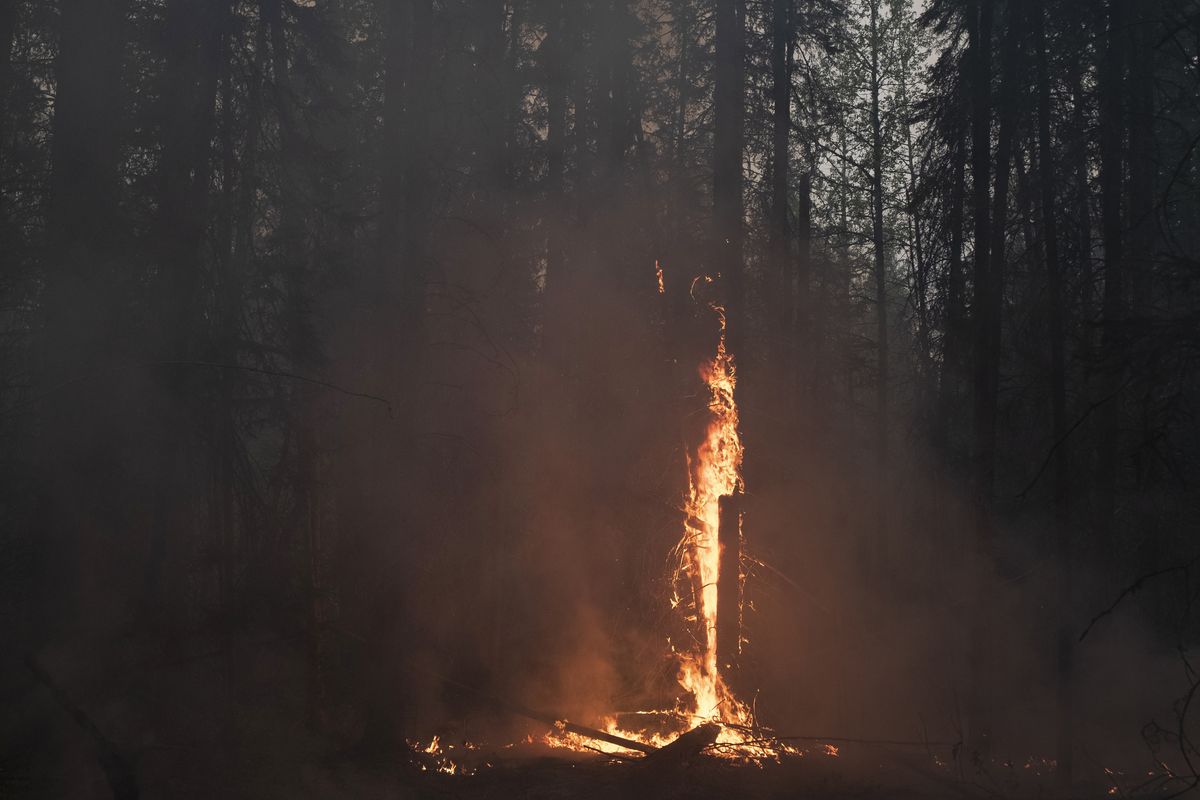Biden Administration outlines wildfire priorities

From staff reports
Secretary of the Interior Deb Haaland and Agriculture Secretary Tom Vilsack on Wednesday issued a joint memo to federal agency leaders with wildfire responsibilities outlining their vision and goals for managing wildland fires this year.
The memo’s release follows a recent briefing that President Joe Biden held with cabinet officials and agency leaders on the nation’s preparedness for wildfires. It comes following smoke impacts caused by wildfires in Canada.
“Climate change is driving a devastating intersection of extreme heat, drought and wildland fire danger across the United States, creating wildfires that move with a speed and intensity unlike anything we have ever seen,” Haaland said in a news release. “I know firsthand the impact this is having across the West.”
Vilsack said Biden has proposed permanent pay increases, better housing and other resources for firefighters.
“Wildland firefighters perform physically demanding, rigorous and dangerous work that is essential to protect people and communities,” Vilsack said in the release.
USDA and the Interior Department aim to have more than 17,000 wildland firefighters on board by the end of this year to combat wildfire. Air resources, heavy equipment and other support personnel also are ready to respond as needed, according to the release.
As of the most recent pay period, more than 14,000 U.S. Forest Service and 5,000 Interior Department wildland firefighters have received more than $381 million in temporary pay supplements provided by President Biden’s Bipartisan Infrastructure Law.
Last year, about 69,000 wildfires burned more than 7.5 million acres across the U.S. That exceeded the 10-year average and the 2021 total by more than 10,000 fires.
Bighorn settlement reached
A settlement agreement reached in U.S. District Court in Spokane will require the U.S. Forest Service to protect nearly half of the wild bighorn sheep in Washington state from disease outbreaks originating from domestic sheep.
The settlement resolves a lawsuit filed by the Western Watersheds Project and WildEarth Guardians in November 2020 over the federal agencies failure to require separation from the wild and domestic sheep on grazing allotments within the Okanogan-Wenatchee National Forest, according to a news release.
“The Forest Service has been dragging its feet for years on protecting bighorns on the forest, and bighorns have paid the price for this delayed action with their lives,” Greg Dyson, conservation director at WildEarth Gaurdians, said in the release.
Domestic sheep carry two pathogens that, when transmitted to bighorn sheep, cause deadly pneumonia in bighorns and reduce lamb survival rates for years.
Members of an infected herd can easily transmit the disease to nearby bighorn herds. There is no cure or vaccine.
“It is imperative for federal agencies to provide at least 15 miles of distance between bighorn sheep habitats and public lands leased for domestic sheep grazing, because bighorn rams range that far from core habitats in search of mates,” said Erik Molvar, a wildlife biologist and Executive Director with Western Watersheds Project.
Under the settlement, the Forest Service will complete a long-overdue environmental review in accordance with the National Environmental Policy Act to determine whether high-risk allotments should be closed.
Idaho seeks users’ help
Idaho’s 2.5 million acres of endowment-trust lands are meant to generate revenue through timber, grazing and other management activities.
The money raised from the management of those acres helps fund education and reduces taxes on state residents. Despite that, Idaho in 2022 again ranked 50th among states for school spending per pupil.
Recreational use of endowment land is a secondary privilege allowed only if it does not cause damage or disturb the revenue generating potential of the land.
More than 96% of endowment land is accessible by foot, watercraft or motor vehicle for hunting, fishing, hiking, camping or other recreation.
For instance, the Idaho Department of Lands had to shut down some areas in North Idaho after UTV operators tore up timberland by riding their machines off trail. State employees then had to build fences, rehabilitate the land and reestablish one riding trail.
It has taken two years with a cost of nearly $23,000 , and the work continues.
“Unfortunately, when a few bad actors damage endowment land, it can impact recreational access for everyone,” IDL director Dustin Miller said in a news release.
“Money to repair damage comes out of funding for public schools and recreation user fees and short-changes Idaho’s children and outdoor enthusiasts.”
The alternative to closing land to recreation, according to the news release, is a new law that will reduce the penalties faced by those caught damaging state land.
With help from the Idaho State ATV Association, Idaho Recreation Council, Idaho Outfitters and Guides Association and Idaho Sportsmen sponsored the legislation later signed by Gov. Brad Little.
Instead of “heavy-handed” misdemeanor or felony-criminal trespass charges, the new law calls for law enforcement officers to issue “warnings and simple citations.”
“These more reasonable penalties are more likely to be enforced and they open the door for educating the public about the privilege of responsible recreation on endowment land,” said Benn Brocksome, executive director of Idaho Sportsmen.
Rulemaking, however, is required to implement the new law.
A public meeting is scheduled for July 10 in Coeur d’Alene. Citizens can attend these hearings by Zoom, too. Written comments on the draft rule are accepted through July 19.
“Those who recreate on endowment land are encouraged to participate in this next step by sharing their ideas,” IDL’s Miller said in the release. “This rulemaking will define what inappropriate behaviors on endowment land will be subject to warning and infraction tickets.”
Details about this rulemaking process, along with a draft copy of the rule, are available at www.idl.idaho.gov/recreation-rulemaking.